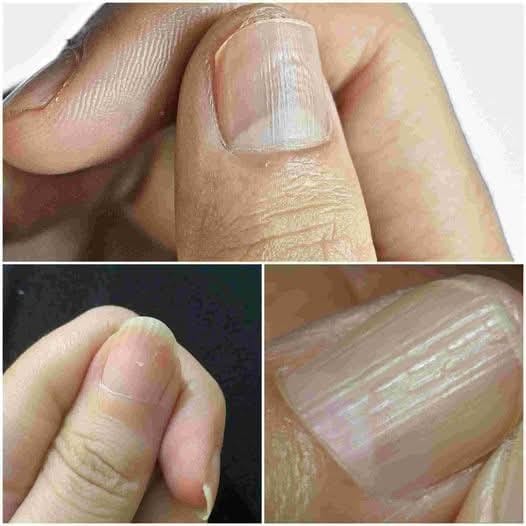ADVERTISEMENT
**The REAL Causes of Vertical Ridges on Your Nails: A Comprehensive Guide**
Nails are often one of the first areas of the body that people notice, and they can provide significant insight into a person’s overall health. Vertical ridges on nails, commonly referred to as longitudinal striations, are one such nail feature that frequently attracts attention. While some may consider them a cosmetic flaw, vertical ridges on nails can sometimes be a sign of an underlying health issue. In this article, we will explore the real causes of vertical ridges on nails, how they form, what they could indicate about your health, and what steps you can take to address or minimize their appearance.
### What Are Vertical Ridges on Nails?
Vertical ridges on nails are long, raised lines that run from the base (near the cuticle) to the tip of the nail. These ridges can be fine and shallow or pronounced and deep, and they may appear on a single nail or several nails. Vertical ridges are more common in older adults and may be considered a natural part of the aging process for many people. However, if these ridges appear suddenly or change in appearance, it can be a signal of something more serious.
Vertical ridges differ from horizontal ridges, which are often caused by trauma, illness, or certain conditions like Beau’s lines. While vertical ridges are usually harmless, it’s essential to understand their potential causes and any associated health implications.
### Natural Causes of Vertical Ridges
1. **Aging Process**
One of the most common and natural causes of vertical ridges is aging. As people age, the nail matrix (the part of the nail that produces the cells that form the nail plate) undergoes changes. These changes can cause the nails to lose some of their smoothness, leading to the development of vertical ridges.
The natural reduction in the production of keratin, the protein that makes up the nails, can cause the nails to become more brittle and less uniform. This can result in the appearance of fine vertical ridges. As a person ages, these ridges may become more pronounced and noticeable.
2. **Genetics**
Genetics also plays a significant role in the development of vertical ridges. Some people are naturally predisposed to developing ridges on their nails due to their genetic makeup. If your parents or grandparents had vertical ridges on their nails, you might be more likely to develop them as well.
Just as some people are genetically inclined to have straight or curly hair, smooth or textured skin, or other physical traits, nail characteristics such as the presence of ridges are often inherited. In these cases, vertical ridges are likely to be harmless and not indicative of a health problem.
3. **Nail Care and Trauma**
Improper nail care can contribute to the formation of vertical ridges. Excessive filing, biting, or using harsh nail products can weaken the nails, leading to changes in their appearance. Repeated trauma to the nails can damage the nail bed or the matrix, affecting the way the nails grow and causing the development of ridges.
Additionally, exposing the nails to excessive moisture or harsh chemicals can cause them to become brittle, leading to the formation of vertical ridges. Using harsh nail polishes, acetone-based removers, or other chemical treatments may also play a role in this process.
### Medical Conditions and Health Issues That Can Cause Vertical Ridges
While vertical ridges can sometimes be harmless, they can also signal an underlying medical issue. In these cases, vertical ridges may be accompanied by other symptoms, such as changes in nail color, texture, or thickness, or even pain. Let’s explore some of the medical conditions and health factors that can cause vertical ridges on nails:
For Complete Cooking STEPS Please Head On Over To Next Page Or Open button (>) and don’t forget to SHARE with your Facebook friends
